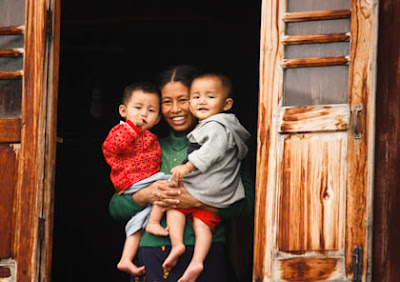Looking at the hand of a co-worker, I can guess with reasonable certainty that they attended a wedding function. Swirling paisley, floral, and curvilinear forms adorn the fingers, hands, and palm. Sometimes the design spreads past the wrist as well. Although henna can be used to decorate the hands at other functions (and even for fun), the wedding designs are particularly detailed - especially for that of the bride. In fact, the name of the bride is sometimes artfully hidden within the design.
A natural dye made from ground leaves of a small flowering shrub grown in hot climates. The color of henna ranges from orange to near black, depending on the region of origin. A type of "temporary tattoo, mehendi designs can last from a few days to up to a month. Although the use of henna can be found world-wide, it is particularly popular in India, Pakistan, Afghanistan, Somalia, Sudan, North African countries, Egypt, and Bangladesh. India is the third country in which I've lived where henna was used as a beauty material. In Tunisia and India, it dyed aging hair a bright orange color or helped to hide grey. In India and Mali, women would gather together prior to an important function and have henna designs applied to their hands and feet. Already popular in ancient Egypt, the use of henna will continue to beautify the bodies of people, long after many modern treatments have faded away.
A natural dye made from ground leaves of a small flowering shrub grown in hot climates. The color of henna ranges from orange to near black, depending on the region of origin. A type of "temporary tattoo, mehendi designs can last from a few days to up to a month. Although the use of henna can be found world-wide, it is particularly popular in India, Pakistan, Afghanistan, Somalia, Sudan, North African countries, Egypt, and Bangladesh. India is the third country in which I've lived where henna was used as a beauty material. In Tunisia and India, it dyed aging hair a bright orange color or helped to hide grey. In India and Mali, women would gather together prior to an important function and have henna designs applied to their hands and feet. Already popular in ancient Egypt, the use of henna will continue to beautify the bodies of people, long after many modern treatments have faded away.

























